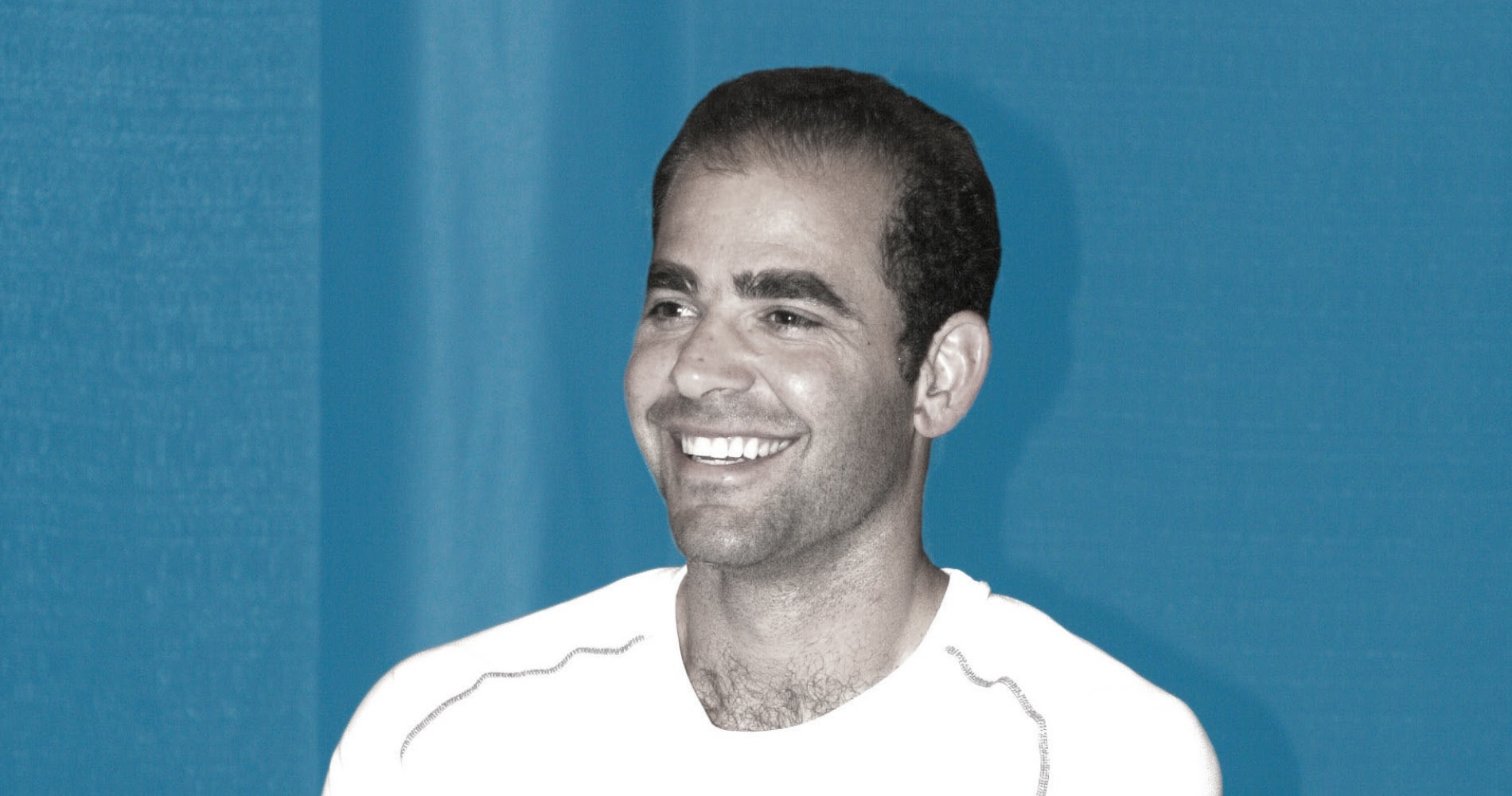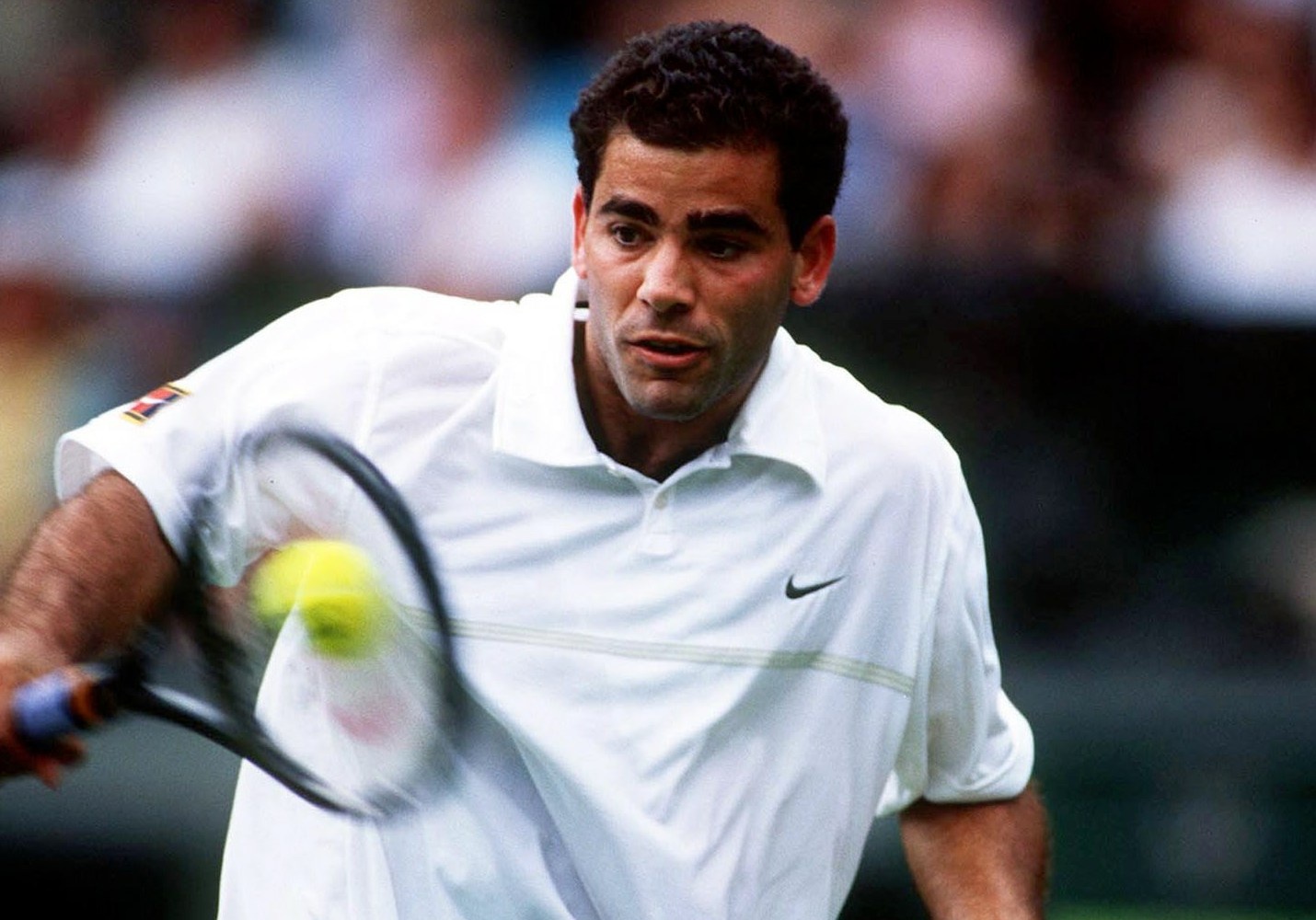July 15, 2007: The day an emotional Pete Sampras was inducted into the International Tennis Hall of Fame
Every day, Tennis Majors takes you back in time to relive a tennis event which happened on this specific day. On this day, July 15, 2007, an emotional Pete Sampras was inducted into the International Tennis Hall of Fame
 Sampras Pete
Sampras Pete
What happened exactly on that day
On this day, July 15, 2007, former world No 1 Pete Sampras was overwhelmed by emotion during his speech at his International Tennis Hall of Fame induction. The American champion, who then still held the all-time record of 14 Grand Slam titles, had been known for his self-control throughout his successful career, but on that particular day, he could not hold back his tears.
The player: Pete Sampras
Pete Sampras, born in 1971, had dominated the game in the1990s. After winning a first Grand Slam title at the 1990 US Open (where he became the youngest winner of all-time, edging his lifelong rival Andre Agassi in the final, 6-4, 6-3, 6-2), he became world No 1 in April 1993. Having been criticised for reaching world No 1 without having claimed a major title in more than two years, he made himself worthy by winning three consecutive Grand Slam titles: Wimbledon and the US Open in 1993, followed by the Australian Open in 1994. He then ended the next six seasons (1993-1998) as world No 1.
Sampras’ serve-and-volley game was particularly lethal on the All England Club grass, holding a 53-1 record (the only man to beat him between 1993 and 1998 was Richard Krajicek, in the 1996 quarter-finals, 7-5, 7-6, 6-4). Sampras also triumphed five times at the US Open (1990, 1993, 1995, 1996, 2002) and twice at the Australian Open (1994, 1997), setting a record of 14 Grand Slam titles. On top of that, the American won the Masters Cup five times (1991, 1994, 1996, 1997, 1999), accumulating a total of 64 titles in his career. At the time, he also held the record for the longest time spent as world No 1 (286 weeks).
Sampras would have been easily called the greatest of all-time without his obvious weakness on clay. His best performance at Roland-Garros was a semi-final reached in 1996 (lost to Yevgeny Kafelnikov, 7-6, 6-0, 6-2), and he never reached the second week of the tournament again. Pistol Pete announced his retirement during the 2003 US Open, but his last match on the tour remained his 2002 final won against Agassi in New York.
Sampras’ career was strongly impacted by his rivalry with Agassi. The two Americans had been rivals since the early 1990s, when Sampras defeated Agassi in the final of the 1990 US Open. Their rivalry peaked in 1995, when they fought for world No 1, facing each other in three Masters 1000 finals and two Grand Slam finals: Agassi had prevailed in Australia and Sampras took his revenge in New York. Even when Sampras had started to decline in his late years, he always performed at his best in front of Agassi. Their masterpiece remained their encounter in the 2001 US Open quarter-finals, Sampras winning 6-7, 7-6, 7-6, 7-6 with neither player broken in the match.
Among other unforgettable moments in his great career, tennis fans would always remember his tears during the 1995 Australian Open quarter-final against Jim Courier, when Sampras was shocked after he found out his coach, Tim Gullikson, had been diagnosed with a brain tumour.
From a technical point of view, Pete Sampras would remain famous for his deadly serve, his amazing running forehand, his impressive slam dunk overheads and his extraordinary half-volleys.

The place: Newport Hall of Fame
The International Tennis Hall of Fame is located in Newport, on Rhode Island. It honours both players and other contributors to the sport of tennis. The complex used to be the Newport Casino, where the first US Championships, which later became the US Open, were held by the USTA in 1881. Every year, in July, the Hall of Fame holds an ATP tournament on grass, which serves as a background to the Hall of Fame inductions.
The facts: Sampras introduced
Almost five years after his last match on the Tour, and four years after his official retirement from tennis, Sampras was induced into the Hall of Fame. A Hall of Fame induction is considered as a great recognition of a champion’s achievements, and it is usually a special occasion for a former great player to open up about his feelings and reflect on his career. With his outstanding career, there had never been any doubt that Sampras was going to be a member of the Hall of Fame one day. Described by his rival Agassi as “cold-blooded killer”, his nerves had almost never betrayed him during his years on the Tour.
In his autobiography, A Champion’s mind, here’s how Sampras would describe his state of mind. “There were times in my career when I would step up to the service line at crucial moment in the heat of combat in a big match and pause to drink in the atmosphere. Fired up by adrenaline, I’d look toward the crowd and defiantly say to myself, “All right everybody, now I’m going to show you who I really am.” Another quote from the book illustrates what Agassi meant: “Choking is being in a position to win, and then experiencing some critical failure of nerve or spirit. That never happened to me. And I can’t help but think it was because I was never afraid to lose.”
I guess I bottled up emotion for 16 years and now you’re seeing it, huh?
Pete Sampras
No one expected cold-blooded Pistol Pete, who had always been in control of his nerves in Grand Slam finals in front of thousands of spectators, to be overwhelmed by emotion during his Hall of Fame speech. Yet, on July 15, 2007, a totally different person stood behind the microphone to reflect on his career. A very emotional Sampras gave an inspirational speech that day. This time, he did not pause to drink in the atmosphere as in the good old days: he paused several times to settle down, hold back his tears as much as he could and gather himself together to move on. Here’s the conclusion to his beautiful inducting speech, which summed up one of the greatest careers in tennis history.
“I guess I bottled up emotion for 16 years and now you’re seeing it, huh? But tennis has represented a big part of my life. It’s given me a lifetime of memories and lessons, all of which I will carry with me forever. At the end of the day, the thing I’m most proud of is, I never strayed from my core values. From the attitudes and philosophy passed on to me from my parents, and men like Rod Laver, I embraced the quiet way, and I walked that high road as best I could. Above all, I wanted to represent myself, my family, and the game in a way which we could all be proud of.
“So as I take my place among the greatest players of all time here in the Hall of Fame, I stand before you both humbled and grateful. I’m a tennis player: nothing more, and nothing less. It’s more than enough for me. It always has been. I thank you.”








